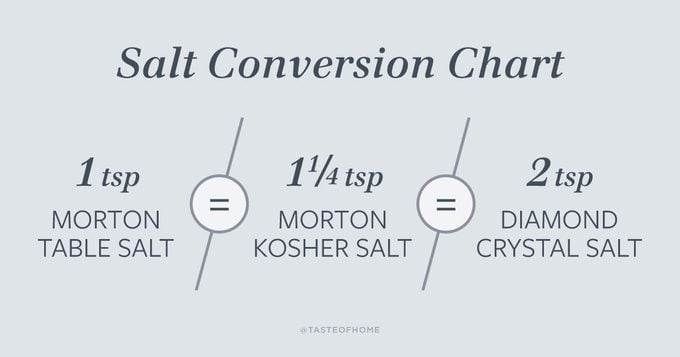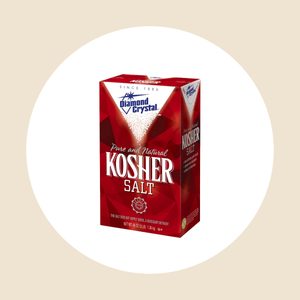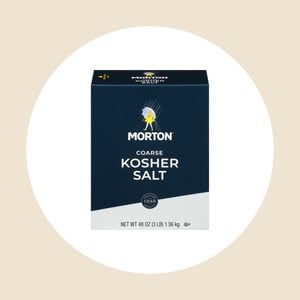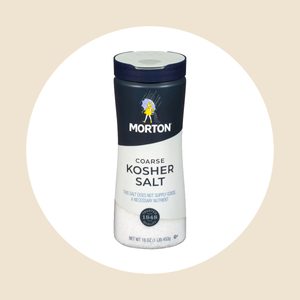Kosher Salt vs. Table Salt: What’s the Difference?
Updated: Dec. 05, 2022
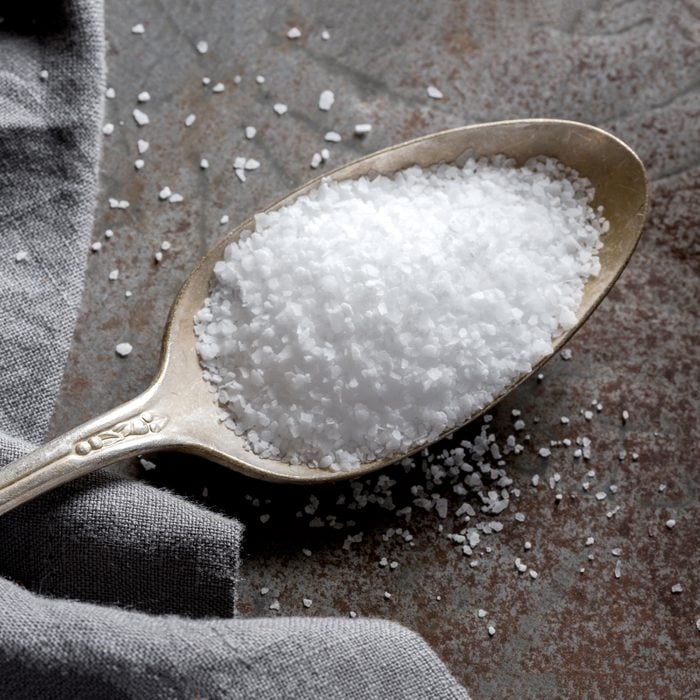
Kosher salt has become a standard ingredient in the home cook's kitchen. But did you know that the two major brands are seriously different?
Our editors and experts handpick every product we feature. We may earn a commission from your purchases.
I never really gave salt a second thought until I went to culinary school. One of my chef instructors explained that both kosher salt and table salt will get the job done—after all, every type of salt adds salinity to a dish—but kosher salt’s coarseness felt better in his hands compared to table salt’s tiny crystals.
What I didn’t realize until much later is that not all kosher salt is equal. There’s a difference in the two major brands, Diamond Crystal and Morton. You can substitute one for the other when measuring by weight, but you’ll have to do some culinary math if you’re using measuring spoons.
What Is Kosher Salt?
This salt is a type of sea salt with a large grain size, making it easier to control than its fine-grained cousin, table salt. It got its name because it was popular among Jewish butchers. The larger flakes draw out moisture more quickly than table salt, making it a popular choice for koshering meat.
Kosher salt has long been a staple in restaurant kitchens, and many home cooks have adopted it as well.
Kosher Salt vs. Table Salt
There are two main differences. For starters, kosher salt has a much coarser grain than table salt, which is composed of many fine salt granules. It’s easier to oversalt when working with the smaller granules, and as a bonus, many chefs find it more satisfying to season with larger flakes. The size of kosher salt crystals creates a delicious crust when grilling steak. It’s too large to come out of a salt shaker, though, so invest in a salt cellar if you plan to keep kosher salt in the kitchen.
The second major difference is that kosher salt is pure sodium chloride. Most table salt is “iodized,” which means it has added iodine. Table salt also typically contains anticaking agents to prevent the small granules from sticking together.
One is not necessarily better than the other, but some people prefer using kosher salt for aesthetic purposes, as the additives in table salt can contribute to a cloudy wet brine.
Diamond Crystal Kosher Salt vs. Morton Kosher Salt
You would think the two major brands of kosher salt—Diamond Crystal and Morton—could be used interchangeably, but their flake size differs considerably.
Morton’s thin crystals are made by crushing salt granules between high-pressurized rollers, while Diamond Crystal’s pan-evaporated process creates smaller, pyramid-shaped flakes. This makes Diamond Crystal salt coarser than Morton, so it takes up more space by volume. That means that a teaspoon of Diamond Crystal salt won’t taste as salty as a teaspoon of Morton.
How to Use the Right Amount of Salt
There’s an easy way to know how much salt to use: a kitchen scale. Bakers measure by weight instead of volume because it’s a more precise way of understanding ingredient quantities. A packed cup of flour has more weight than a cup of flour with air between the granules, and the difference can be devastating for pastries.
At the end of the day, don’t stress too much if you’re seasoning roasted vegetables or meat for the grill. These dishes don’t contain as much salt as a brine, which might use a cup (or more!) of salt.
In general, use this conversion: 1 teaspoon of table salt has the same level of saltiness as 2 teaspoons of Diamond Crystal salt or 1-1/4 teaspoon of Morton salt. And remember: Start small when working with any salt, but especially table salt and Morton salt. You can always add more salt later, but it’s much harder to fix a dish that’s already over-salted.
